Siem Reap, a city that serves as the gateway to millennium-old ruins of the Khmer Empire, offers far more than its world-renowned temples. While the majestic Angkor Wat and the enchanting Bayon steal most of the limelight, this vibrant city is a treasure trove of activities waiting to be discovered.
Today, we’ll uncover a selection of the lesser-known places to visit in Siem Reap, each offering a diverse and captivating experience unique to this cultural haven.
1. Angkor National Museum
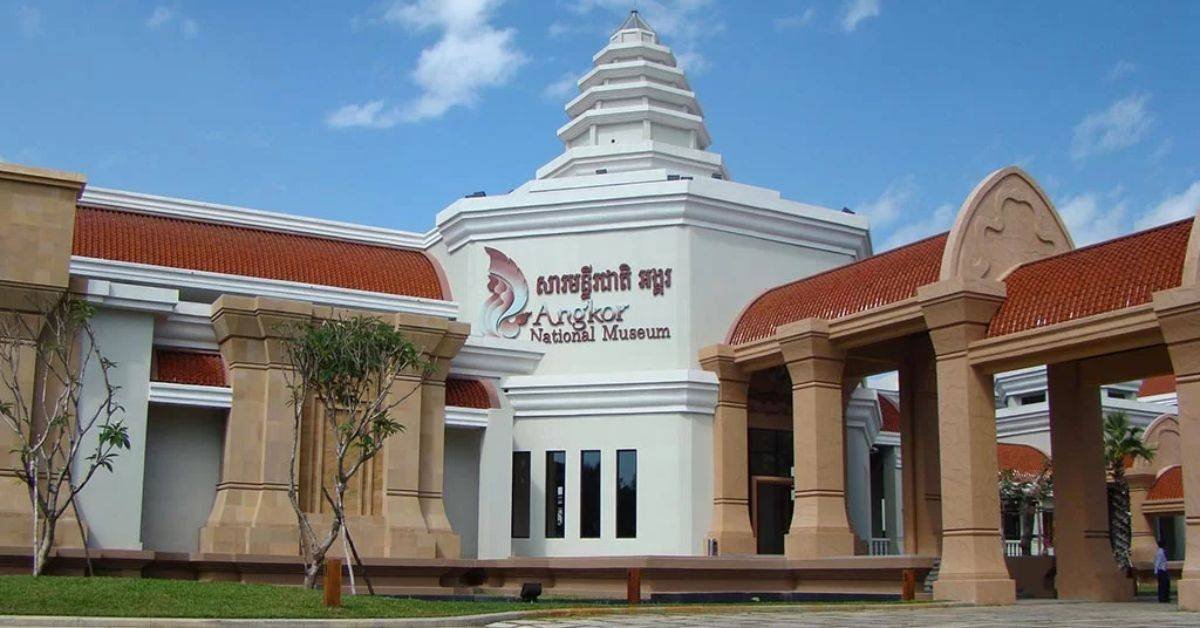
The Angkor National Museum in Siem Reap stands as a prominent cultural beacon, crucial for those wishing to immerse themselves in the historical grandeur of ancient Cambodia. This institution is located along Charles De Gaulle Boulevard, housing over a thousand artefacts and providing visitors a chance to delve into the depths of ancient Angkor civilisation.
Upon arrival, you will be greeted by a short video presentation of the museum’s history, amenities, and services before exploring the galleries. The Angkor National Museum is famous for its ‘Gallery of 1,000 Buddhas,’ which features an impressive array of sculptures made from wood, jade, and metal with a description of their origin for visitors to immerse themselves in the rich history behind each one.
Architecturally, the museum melds traditional Khmer elements with modern design, creating an atmosphere that resonates with history yet accommodates the contemporary visitor’s needs. As such, a visit to this repository of history is essential for anyone seeking a holistic appreciation of the ancient ruins scattered across the region and the civilisation that once flourished in Southeast Asia.
2. Baray Lakes and The Mebon Temples
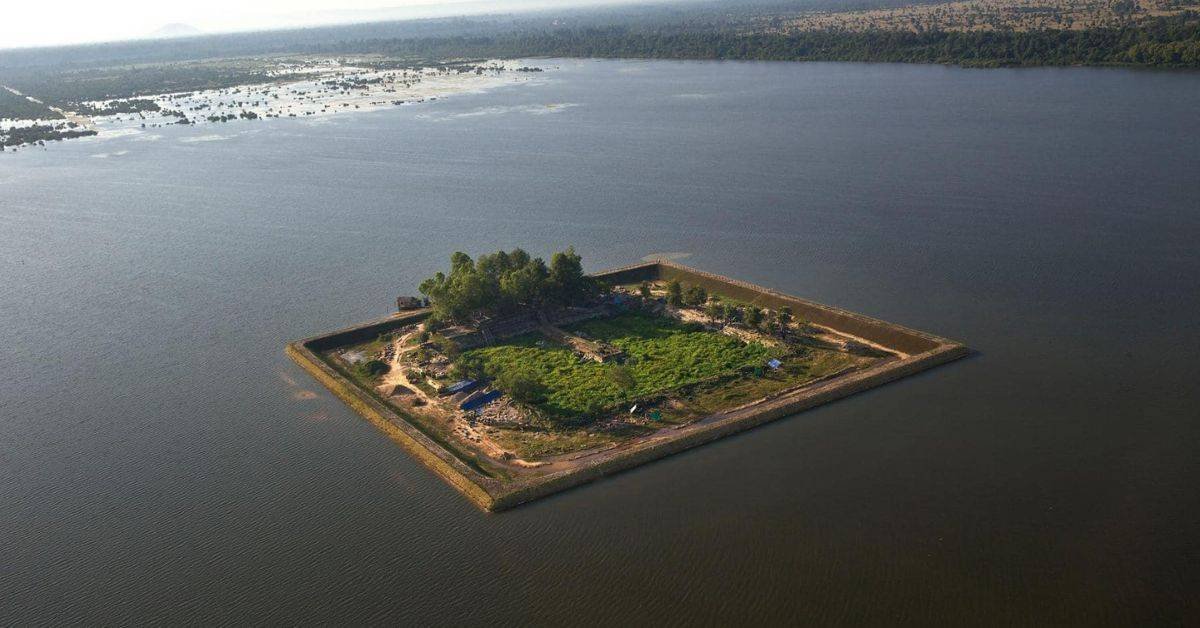
The Baray Lakes and The Mebon Temples are among some of the most remarkable places to visit in Siem Reap that showcase the achievements of Angkorian architecture. The Baray Lakes are enormous man-made reservoirs designed for water storage and irrigation, divided into the East Baray, which is 14 km2 wide, and the West Baray is 16 km2.
The Mebon Temples are connected to the Baray Lakes, they are temples built on artificial islands at the centre of reservoirs, symbolising the mythical Mount Meru, the centre of the Hindu and Buddhist universe. The temples are also separated into two prominent temples; East Mebon and West Mebon.
These hydraulic and architectural feats played roles beyond practical water management and religious observance. They symbolised the celestial order on earth, mirroring the spiritual belief that the king, or “Devaraja” (god-king), was the earthly embodiment of divine power. The Barays and Mebon temples represent the intricate blend of political power, religion, and artistry that characterised Angkorian Cambodia. They are truly amazing feats of engineering that you ought to visit while in Siem Reap.
3. Chau Say Tevoda

Chau Say Tevoda is a 12th-century Hindu temple built during the reign of King Suryavarman II. This small yet graceful temple complex perfectly echoes the aesthetic brilliance of its contemporaneous builds, Angkor Wat and Angkor Thom. The intricate carvings and classic ‘gopura’ layout featuring entrance pavilions and a central sanctuary highlight the Khmer Empire’s artistic zenith. Each lintel, pediment, and column carries a narrative, predominantly centred around the Hindu deities Shiva and Vishnu.
However, time hadn’t been kind to Chau Say Tevoda, leading to significant deterioration, compounded by years of neglect and looting. It was only through meticulous UNESCO-guided restoration efforts in the early 21st century that the temple saw a revival.
Today, Chau Say Tevoda stands as a serene escape from the often overcrowded main attractions of the Angkor Archaeological Park. Its proximity to larger complexes means it’s easily accessible, yet it promises a more peaceful exploration, allowing visitors to appreciate the nuances of Angkorian art and architecture at their own pace.
4. Kbal Spean River

Another intriguing archaeological site in Siem Reap, the Kbal Spean River, is often referred to as the ‘River of a Thousand Lingas.’ These lingas are phallic symbols carved into the sandstone formation in the river bed and banks, which are believed to ‘fertilise’ the waters flowing to Angkor. It is situated along a 150m stretch of the Stung Kbal Spean River, approximately 25 kilometres from the main Angkor group of monuments.
Kbal Spean was carved during the 11th and 12th centuries under the reign of the kings Udayadityavarman II, followed by Suryavarman II. Unlike other temple complexes around Siem Reap, Kbal Spean is part of the Cambodian jungle’s natural landscape. The site is located within the Phnom Kulen National Park, and a visit here involves a moderately challenging trek uphill through dense, beautiful jungle scenery. To many, this is a new place to visit in Siem Reap, which offers a different experience from the more structured temple visits, offering tourists a sense of adventure and connection with nature.
5. North Khleangs
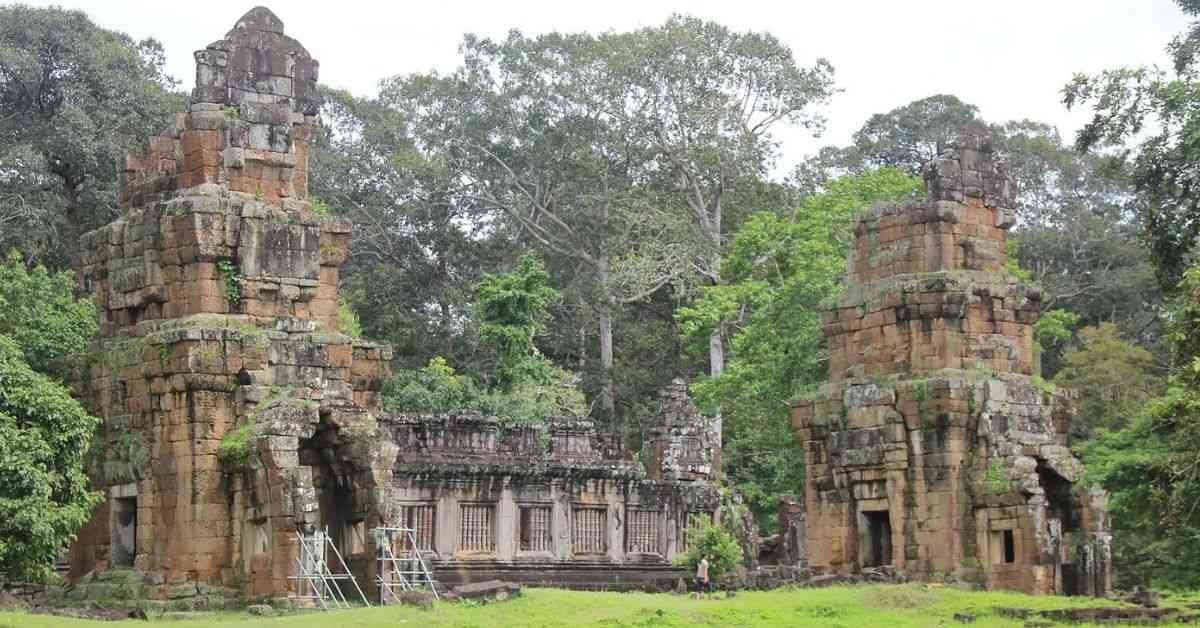
As the name suggests, the North Khleangs are building sites situated to the north of Angkor Wat’s main site. These mysterious edifices, while termed ‘khleangs,’ which means ‘storerooms,’ likely served a purpose far more significant than mere storage. Still, they hold a critical place in Angkor’s architectural and historical tapestry.
The Khleangs are believed to have been constructed in the late 10th and early 11th centuries, during the reigns of King Jayaviravarman and King Suryavarman I. Their existence predates the construction of Angkor Thom, the last and most enduring capital city of the Khmer Empire.
You can find the North Kleangs right in the same location as Angkor Thom, illustrating the complexity and functionality of these Siem Reap attractions beyond the religious and royal grandeur.
6. Preah Vihear Temple
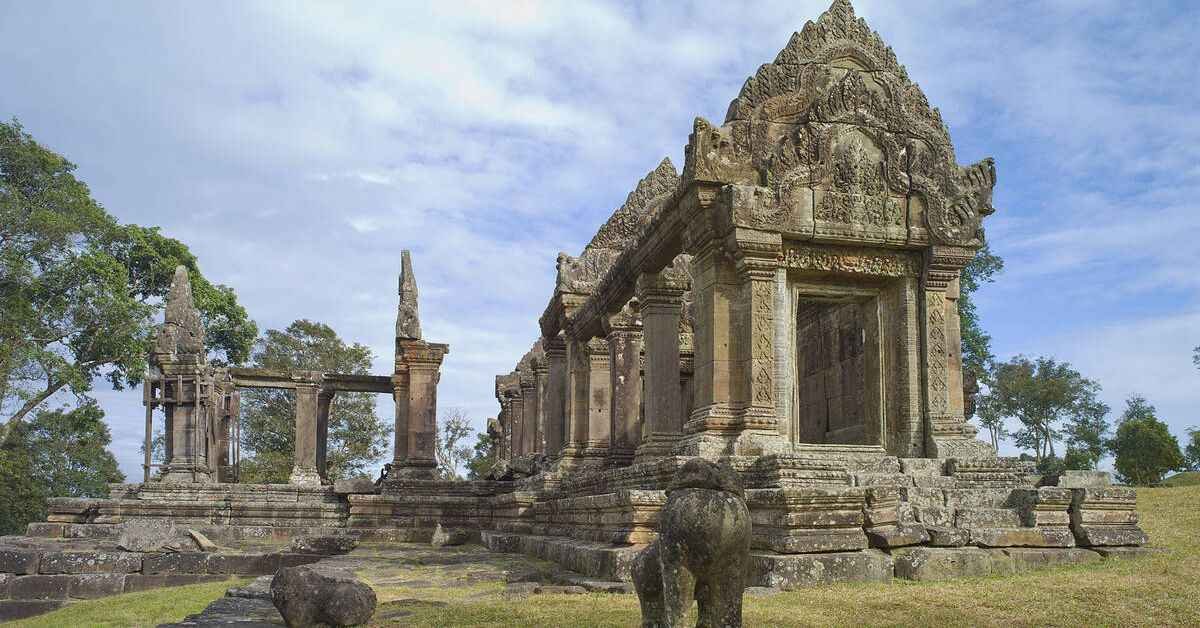
If you are looking for a new place to visit in Siem Reap outside its centre, Preah Vihear Temple is a recommended destination. Preah Vihear Temple, also known as Prasat Phra Viharn, is a significant piece of Khmer architecture situated around 140 kilometres north-east Angkor Wat, at the edge of the Thai border. It takes about a 4-hour journey by road through Cambodia to reach This ancient temple complex.
Unlike the more horizontally expansive Angkor Wat, Preah Vihear is a unique structure, stretching along a north-south axis and ascending through a series of impressive sanctuaries, courtyards, and staircases, leading visitors on a symbolic journey toward the sacred mountaintop.
The temple’s remote location on the edge of a cliff in the Dangrek Mountains provides visitors with breathtaking views, emphasising the traditional belief in the sanctity of high places. The site’s position, straddling the contentious Thai-Cambodian border, has historically led to ownership disputes between the two nations. Still, it stands today as a symbol of the cultural richness and architectural ingenuity of ancient Southeast Asian civilisations.
7. Siem Reap Crocodile Farm

For those seeking things to do in Siem Reap that are different from visiting cultural sites, the Siem Reap Crocodile Farm may just be the place. It is a commercial establishment primarily concerned with the conservation and breeding of crocodiles. It’s one of several such farms in Cambodia, a country where crocodile farming plays a significant role in the local economy. These farms serve various purposes, from helping to preserve endangered crocodile species to supplying crocodile skins to the fashion industry.
It is important to note that this is a farm, not a zoo. The farm in Siem Reap houses thousands of crocodiles of different species, sizes, and ages. While the viewing experience can be fascinating, it’s crucial for visitors to maintain a safe distance from the enclosures and heed all safety instructions and warnings. The facility is designed to be safe for viewing but, naturally, these are wild animals that can be dangerous.
8. Srah Srang

A small-scale but picturesque reservoir located to the east of Banteay Kdei. Srah Srang, which translates to ‘The Royal Bath,’ dates back to the mid-10th century and served both practical and religious purposes in its heyday.
Srah Srang measures approximately 700 by 350 meters and is still filled with water today, offering a serene setting. The most notable feature is the western embankment, where a terrace with lion guardians and naga balustrades, a typical Khmer architectural element, provides an alternate vantage point for viewing the sunrise or sunset, which is much less crowded than Angkor Wat.
Today, while there are no structural ruins around Srah Srang, unlike other sites in Angkor, the reservoir itself is a testament to the engineering prowess of the Khmer Empire. It continues to provide insight into the sophisticated irrigation system that sustained the Angkor region.
9. Ta Keo

Ta Keo stands as a monumental temple-mountain, assembled from massive blocks of sandstone. Its construction is credited to three successive kings: Jayavarman V, Jayaviravarman, and Suryavarman I. Initiated by Jayavarman V, Ta Keo was unique as his state temple, primarily because, unlike other state temples, it was situated outside the main capital area.
Ta Keo is distinguished by its pyramid structure, which is a representation of the temple-mountain architectural style. This style symbolises Mount Meru, believed in Hindu mythology to be the home of the gods. Remarkably, Ta Keo is known to be one of the first temples constructed entirely of sandstone, which was a significant engineering feat at the time. Interestingly, Ta Keo is known as the “unfinished temple,” as the work seems to have stopped particularly abruptly. The reasons for this halt aren’t entirely clear, but historians speculate it could be due to a lightning strike, considered a bad omen, or possibly the death of Jayavarman V.
Climbing the steep staircases of Ta Keo offers a tangible connection to history, as visitors can ponder the massive effort needed to construct such a monument. From the higher terraces, one can appreciate panoramic views of the surrounding jungle and temple complex. The temple’s less adorned and slightly austere appearance, along with typically fewer crowds, can offer a more contemplative experience compared to the more famous Angkor Wat.
10. Wat Damnak Pagoda
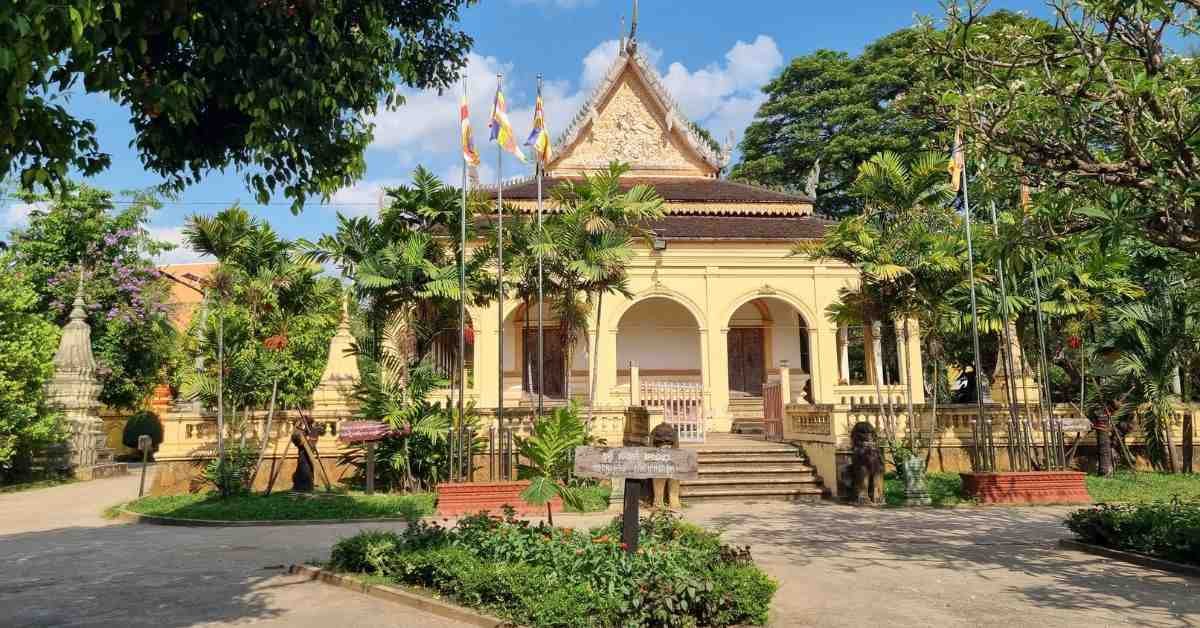
Apart from the ancient temple sites, Siam Reap also houses a living temple—Wat Damnak Pagoda, a great place to visit in Siem Reap. It is one of the most significant and largest pagodas in Siem Reap. This living religious site is a hub for community and educational activities.
Wat Damnak was once a royal palace, hence its name, which translates to ‘Palace Wall’ or ‘Palace Pond.’ After the royal residency period, it was transformed into a Buddhist monastery, which it remains today. This transition highlights its sustained importance in local cultural and spiritual life over the years. The grounds of Wat Damnak are extensive, featuring manicured gardens, smaller shrines, and educational buildings. It creates a serene atmosphere in contrast to the bustling activity of Siem Reap.
For tourists, a visit to Wat Damnak offers insight into contemporary Buddhist practice in Cambodia and the daily lives of the monks who reside there. It’s a place for peaceful contemplation, set apart from the commercial areas of the city. Visitors have the opportunity to participate in cultural exchange talks or guided meditations, often organised within the pagoda complex, providing deeper understanding and connections with the local culture.
All the mentioned attractions are among the underrated and best places to visit in Siem Reap for your historical tour in this culturally rich city. With all these places to visit, you are sure to want a great hotel in Siem Reap to stay in. Enter Park Hyatt Siem Reap.
About Park Hyatt Siem Reap
Park Hyatt Siem Reap is a 5-star hotel in Siem Reap located in central Siem Reap, next to Angkor Archaeological Park. The 104 rooms come complete with polished decorations and are set in a Khmer-influenced Art style decoration. The rooms are filled with modern amenities, surrounded by rich facilities, including a spa, a swimming pool, and a fitness centre with top-tier gym equipment. Indulge in the best offers, accommodations, and things to do only at our 5-star hotel in Siem Reap.
See our rooms and suites here
Visit our website or contact us today to find out more.
Tel: +855 6321 1234
Fax: +855 6396 6001
Email: siemreap.park@hyatt.com


